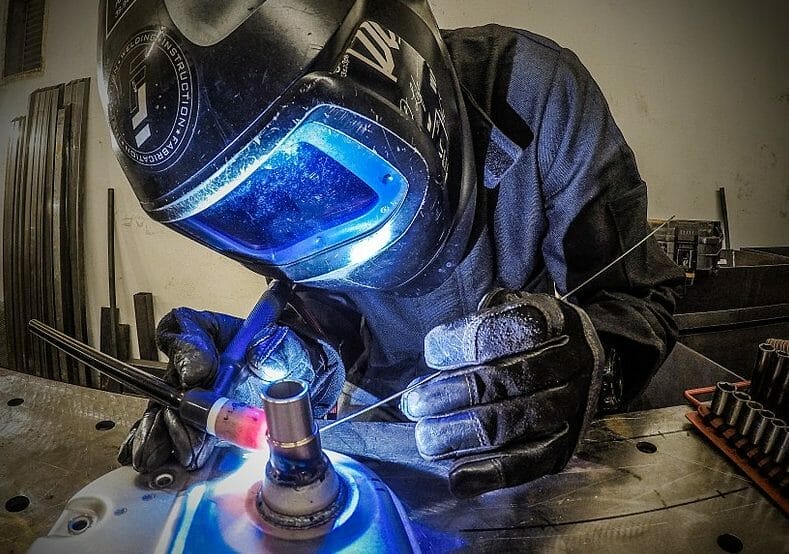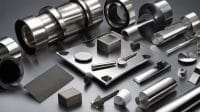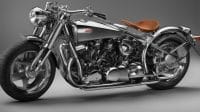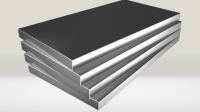Welcome to our comprehensive guide on achieving perfect welds when TIG welding stainless steel. Mastering the appropriate welding settings is essential for producing high-quality welds that meet your project requirements. In this guide, we will provide you with all the necessary information you need to know about TIG welding stainless steel settings. Whether you’re a seasoned welder or just starting, this guide will equip you with the knowledge and skills to master stainless steel TIG welding settings and achieve the perfect weld every time.
Understanding the basics of TIG welding stainless steel
Stainless steel is a popular material for many applications due to its strength, durability, and resistance to corrosion. TIG welding, also known as Gas Tungsten Arc Welding (GTAW), is a preferred method for welding stainless steel because it produces clean and precise welds.
TIG welding involves using a tungsten electrode to create an arc that melts the edges of the base metal and filler material, forming a strong bond. During this process, an inert gas, such as argon or helium, is used to shield the weld from contaminants in the air, preventing oxidation and porosity.
The choice of gas for TIG welding stainless steel is critical as it has a significant impact on the welding process and the final outcome. Argon is the most commonly used shielding gas as it provides excellent coverage and arc stability, resulting in a smooth and clean weld. Helium is another option that can be used on thicker materials to increase heat input and improve penetration. However, it can be more expensive and harder to control than argon.
Aside from gas selection, choosing the right electrode is equally important for successful stainless steel TIG welding. Tungsten electrodes are available in different compositions and sizes, and the selection depends on the specific application and material being welded. Pure tungsten is suitable for welding thinner stainless steel, while thoriated tungsten is better for thicker sections. Other options include ceriated, lanthanated, and zirconiated tungsten.
When selecting an electrode, it is also essential to consider the size and shape. The diameter of the electrode should match the thickness of the material being welded to achieve optimal heat transfer and penetration. The electrode should also be sharpened correctly, preferably to a point, to ensure a stable arc and prevent contamination.
Summary of the basics of TIG welding stainless steel:
| Key Components | Importance |
|---|---|
| Tungsten Electrode | Creates an arc that melts the base metal and filler material |
| Inert Gas (Argon or Helium) | Shields the weld from contaminants in the air, preventing oxidation and porosity |
| Electrode Composition and Size | Depends on the specific application and material being welded |
Choosing the right gas for stainless steel TIG welding
Choosing the correct shielding gas is crucial for achieving a high-quality weld when TIG welding stainless steel. Generally, two types of shielding gases are used: pure argon and a mixture of argon and hydrogen.
Pure argon: This gas is commonly used for TIG welding austenitic stainless steel. It provides excellent arc stability and produces a clean weld with minimal spatter. However, it is not recommended for welding thicker materials as it may lead to inadequate penetration.
Argon and hydrogen mixture: This gas is a popular choice for welding thick stainless steel, such as duplex and super duplex stainless steel. The addition of hydrogen helps to increase weld penetration and speed up the welding process. However, it is important to use the correct mixture of argon and hydrogen and to ensure proper ventilation as the hydrogen component can be flammable.
The flow rate of the shielding gas is also crucial to achieving a high-quality weld. A flow rate of 10-20 cubic feet per hour (CFH) is recommended for TIG welding stainless steel. However, it is important to note that the flow rate may need to be adjusted depending on the welding position and the thickness of the material being welded.
Selecting the appropriate tungsten electrode for stainless steel TIG welding

In TIG welding, the tungsten electrode plays a critical role in achieving a quality weld. When working with stainless steel, selecting the right tungsten electrode is essential for achieving a successful outcome. Here are some key factors to consider when selecting the appropriate tungsten electrode:
| Tungsten electrode type | Alloy suitability |
|---|---|
| 2% Thoriated | General purpose, suitable for most stainless steels |
| 1.5% Lanthanated | High-performance, suitable for high-amperage welding on thicker stainless steel |
| 2% Ceriated | Best for low-amperage welding on thinner stainless steel |
It is important to note that the size of the tungsten electrode should also be selected based on the thickness of the stainless steel being welded. A general guideline is to use an electrode diameter that is equal to or slightly smaller than the thickness of the material being welded.
Another factor to consider is the sharpening technique used on the tungsten electrode. A properly sharpened electrode can help to achieve a stable arc and reduce the risk of tungsten contamination. The preferred sharpening technique for stainless steel TIG welding is a diamond wheel grinder, which produces a consistently sharp point.
Conclusion
Selecting the appropriate tungsten electrode is a crucial step in achieving a quality TIG weld on stainless steel. Remember to consider the type, size, and sharpening technique when choosing the right tungsten electrode for your welding project.
Adjusting amperage and arc length for optimal stainless steel TIG welding
Amperage and arc length are two critical settings that must be adjusted correctly to achieve the perfect TIG weld on stainless steel. Amperage refers to the amount of electrical current flowing through the tungsten electrode and into the stainless steel. Arc length, on the other hand, is the distance between the tungsten electrode and the workpiece.
For welding thin stainless steel sheets, amperage should be set between 5 and 50 amps. In contrast, thicker stainless steel requires higher amperage ranging from 75 to 125 amps. It’s important to keep in mind that the higher the amperage, the more heat is generated, which can lead to warping or distortion of the stainless steel.
It’s crucial to maintain a consistent arc length throughout the welding process. The optimal distance for arc length typically ranges between 1/8 and 3/16 inches depending on the thickness of the stainless steel. A shorter arc length will result in a narrower and deeper weld, while a longer arc length can lead to a shallow and wider weld.
When adjusting amperage and arc length, it’s important to consider the welding position. For example, if welding in a horizontal or overhead position, a slightly shorter arc length can be used to produce a flatter weld bead. In contrast, welding in a vertical position may require a longer arc length to ensure proper penetration.
Controlling travel speed and heat input in stainless steel TIG welding
Controlling travel speed and heat input are critical factors in achieving optimal stainless steel TIG welds. However, it’s important to note that the optimal settings for these factors can vary based on the thickness of the stainless steel and the welding position.

When adjusting travel speed, it’s essential to maintain a consistent pace throughout the welding process. Too fast of a speed can result in inadequate penetration, while a slow speed can lead to excess heat input and potential distortion. As a general rule, faster travel speeds are suitable for thinner stainless steel, while slower speeds are necessary for thicker steel.
Heat input is also a crucial factor that can affect the quality of the weld. Heat input is the amount of energy that is applied to the metal during the welding process. Too little heat input can result in inadequate penetration, while excessive heat input can cause burn-through or warping. It’s essential to find the right balance to achieve a strong, consistent weld.
One way to control heat input is to adjust the amperage. Increasing amperage can increase heat input, while decreasing it can reduce it. However, it’s crucial to adjust amperage based on the thickness of the stainless steel and the desired weld outcome.
Another way to control heat input is to adjust the arc length. Arc length is the distance between the tungsten electrode and the workpiece. Maintaining a consistent arc length helps to produce consistent welds.
In conclusion, controlling travel speed and heat input are crucial aspects of achieving a strong and consistent stainless steel TIG weld. It’s essential to find the right balance based on the thickness of the stainless steel and the welding position. Adjusting parameters such as amperage and arc length can help to maintain the proper heat input and produce high-quality welds.
Fine-tuning post-flow and pulse settings for stainless steel TIG welding
Post-flow and pulse settings play an important role in achieving high-quality stainless steel TIG welds. Post-flow refers to the flow of shielding gas after the arc has been extinguished. This protects the weld from oxidation and contamination, ensuring a strong and durable weld. Pulse settings, on the other hand, allow for the control of heat input and enhance the aesthetic appearance of the weld.
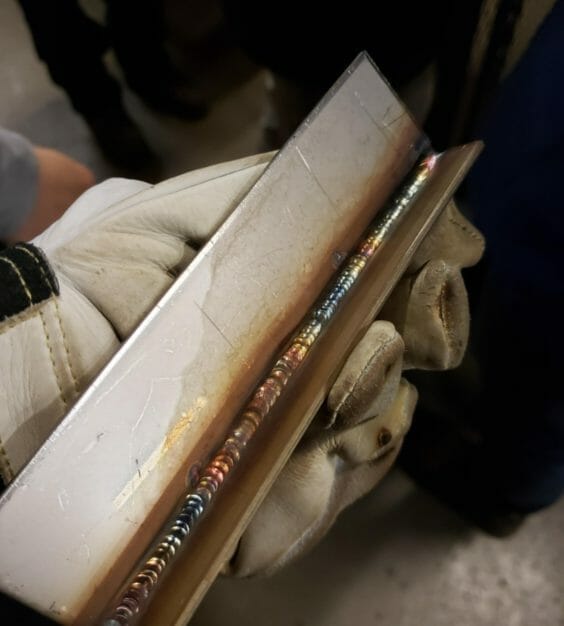
When adjusting post-flow settings, it is important to consider the thickness of the material and the duration of the weld. As a general rule, a longer post-flow time is required for thicker materials and longer welds. For thinner materials and shorter welds, a shorter post-flow time may be sufficient.
When it comes to pulse settings, there are various factors to consider, including the type of material, electrode size, and welding position. Generally, a lower pulse frequency and higher peak amperage are recommended for thicker materials, while a higher pulse frequency and lower peak amperage work well for thinner materials. It is also important to maintain a consistent arc length throughout the welding process to ensure a consistent pulse.
By fine-tuning post-flow and pulse settings, you can achieve even better results for your stainless steel TIG welding projects.
Troubleshooting Common Issues in Stainless Steel TIG Welding

Despite having mastered stainless steel TIG welding settings, issues may still arise during the welding process. Here are some of the common issues and their possible solutions:
| Issue | Possible Cause | Solution |
|---|---|---|
| Inadequate penetration | Insufficient amperage or incorrect tungsten electrode size | Increase amperage or use appropriate tungsten electrode size |
| Porosity | Contaminated tungsten electrode, improper gas flow or too high travel speed | Clean tungsten electrode, adjust gas flow or slow down travel speed |
| Tungsten contamination | Tungsten electrode touching the weld pool or incorrect electrode grinding technique | Keep the electrode away from the weld pool or use appropriate grinding technique |
By taking these preventive measures and following the troubleshooting tips, you can minimize the chances of encountering issues and ensure high-quality stainless steel TIG welds.
Read More : Arc Weld Stainless Steel: Ultimate Guide for Perfect Welding
Frequently Asked Questions about stainless steel TIG welding settings
Here are some commonly asked questions related to TIG welding settings for stainless steel, with concise answers to help you achieve perfect welds:
Q: What type of tungsten electrode is best for stainless steel TIG welding?
A: Thoriated tungsten electrodes are the most commonly used for stainless steel TIG welding, as they offer good arc stability and consistent performance. However, if you are working with thin stainless steel sheets, ceriated or lanthanated tungsten electrodes may be a better option to avoid tip contamination.
Q: What gas flow rate should I use for stainless steel TIG welding?
A: The recommended gas flow rate for stainless steel TIG welding is between 10-20 cubic feet per hour (CFH). However, you may need to adjust this rate based on the specific welding project and the thickness of the stainless steel being welded.
Q: How do I adjust amperage for stainless steel TIG welding?
A: The amperage setting for stainless steel TIG welding should be based on the thickness of the stainless steel being welded. As a general rule, you should use 1 amp for every thousandth of an inch of thickness (e.g. 1/16 inch thickness = 60 amps). However, you may need to adjust the amperage based on the type of joint being welded and the desired outcome.
Q: What should I do if I am experiencing inadequate penetration during stainless steel TIG welding?
A: Inadequate penetration can occur if the amperage is too low, the travel speed is too fast, or the tungsten electrode is too small. Try increasing the amperage, reducing the travel speed, or switching to a larger tungsten electrode to improve penetration.
Q: How can I prevent tungsten contamination during stainless steel TIG welding?
A: Tungsten contamination can be prevented by using the appropriate tungsten electrode type and size, and by ensuring proper electrode preparation and sharpening techniques. You should also avoid touching the tungsten electrode to the workpiece or filler rod, as this can cause contamination.
We hope that these answers have been helpful in addressing your concerns and achieving successful stainless steel TIG welds. If you have any further questions, don’t hesitate to consult with a professional or experienced welder.
